- Home
- Connie Willis
Bellwether Page 3
Bellwether Read online
Page 3
The Earth Mother has okay food and iced tea so good I order it all year round. Plus, it’s a great place to study fads. Not only is its menu trendy (currently free-range vegetarian), but so are its waiters. Also, there’s a stand outside with all the alternative newspapers.
I gathered them up and went inside. The door and entry-way were jammed with people waiting to get in. Their iced tea must be becoming a trend. I presented myself to the waitress, who had a prison-style haircut, jogging shorts, and Tevas.
That’s another trend, waitresses dressed to look as little as possible like waitresses, probably so you can’t find them when you want your check. “Name and number in your party?” the waitress said. She was holding a tablet with at least twenty names.
“One, Foster,” I said. “I’ll take smoking or nonsmoking, whichever’s quicker.”
She looked outraged. “We don’t have a smoking section,” she said. “Don’t you know what smoking can do to you?”
Usually get you seated quicker, I thought, but since she looked ready to cross out my name, I said, “I don’t smoke. I was just willing to sit with people who do.”
“Secondhand smoke is just as deadly,” she said, and put an X next to my name that probably meant I would be seated right after hell froze over. “I’ll call you,” she said, rolling her eyes, and I certainly hoped that wasn’t a trend.
I sat down on the bench next to the door and started through the papers. They were full of animal rights articles and tattoo removal ads. I turned to the personals. The personals aren’t a fad. They were, in the late eighties, and then, like a lot of fads, instead of dying out, they settled into a small but permanent niche in society.
That happens to lots of fads: CBs were so popular for a few months that “Breaker, breaker” became a catchphrase and everyone had handles like “Red Hot Mama,” and then went back to being used by truckers and speeding motorists. Bicycles, Monopoly, crossword puzzles, all were crazes that have settled into the mainstream. The personals took up residence in the alternative newspapers.
There can be trends within trends, though, and the personals go through fads of their own. Unusual varieties of sex was big for a while. Now it’s outdoor activities.
The waitress, looking vastly disapproving, said, “Foster party of one,” and led me to a table right in front of the kitchen. “We banned smoking two years ago,” she said, and slapped down a menu.
I picked it up, glanced at it to see if they still had the sprouts and sun-dried tomatoes croissant, and settled down to the personals again. Jogging was out, and mountain biking and kayaking were in. And angels. One of the ads was headed HEAVENLY MESSENGER and another one said “Are your angels telling you to call me? Mine told me to write this ad,” which I found unlikely.
Soul work was also in, and spirituality, and slashes. “S/DWF wanted,” and “Into Eastern/Native American/personal growth,” and “Seeking fun/possible life partner.” Well, aren’t we all?
A waiter appeared, also in jogging shorts, Tevas, and snit. He had apparently seen the X. I said, before he could lecture me on the dangers of nicotine, “I’ll have the sprouts croissant and iced tea.”
“We don’t have that anymore.”
“Sprouts?”
“Tea.” He flipped the menu open and pointed to the right-hand page. “Our beverages are right here.”
They certainly were. The entire page was devoted to them: espresso, cappuccino, caffè latte, caffè mocha, caffè cacao. But no tea. “I liked your iced tea,” I said.
“No one drinks tea anymore,” he said.
Because you took it off the menu, I thought, wondering if they’d used the same principle as the library, and I should have come here more often, or ordered more than one when I did come, and saved it from the ax. Also feeling guilty because I’d apparently missed the start of a trend, or at least a new stage in one.
The espresso trend’s actually been around for several years, mostly on the West Coast and in Seattle, where it started. A lot of fads have come out of Seattle recently—garage bands, the grunge look, caffè latte. Before that, fads usually started in LA, and before that, New York. Lately, Boulder’s shown signs of becoming the next trend center, but the spread of espresso to Boulder probably has more to do with bottom lines than the scientific laws of fads, but I still wished I’d been around to watch it happen and see if I could spot the trigger.
“I’ll have a caffè latte,” I said.
“Single or double?”
“Double.”
“Tall or short?”
“Tall.”
“Chocolate or cinnamon on top?”
“Chocolate.”
“Semisweet or dark?”
I’d been wrong when I told Dr. O’Reilly all fads had to have a low ability threshold.
After several more exchanges, concerning whether I wanted cubed sugar versus brown and nonfat versus two percent, he left, and I went back to the personals.
Honesty was out, as usual. The men were all “tall, handsome, and financially secure,” and the women were all “gorgeous, slender, and sensitive.” The G/Bs were all “attractive, sophisticated, and caring.” Everyone had a “terrific sense of humor,” which I also found unlikely. All of them were seeking sensitive, intelligent, ecological, romantic, articulate NSs.
NS. What was NS? Nordic skiing? Native American Shamanism? Natural sex? No sex? And here was NSO. No sexual orgasms? I flipped back to the translation guide. Of course. Nonsmoker only.
The buxom, handsome, caring people who place these things seem frequently to have confused the personals with the L. L. Bean catalog: I’d like Item D2481 in passion red. Size, small. And they frequently specify color, shape, and no pets. But the number of nonsmokings seemed to have radically increased since the last time I’d done a count. I got a red pen out of my purse and started to circle them.
By the time my sandwich and complex latte had arrived, the page was covered in red. I ate my sandwich and sipped my latte and circled.
The nonsmoking trend started way back in the late seventies, and so far it had followed the typical pattern for aversion trends, but I wondered if it was starting to reach another, more volatile level. “Any race, religion, political party, sexual preference okay,” one of the ads read. “NO SMOKERS.” In caps.
And “Must be adventurous, daring, nonsmoking risk-taker” and “Me: Successful but tired of being alone. You: Compassionate, caring, nonsmoking, childless.” And my favorite: “Desperately seeking someone who marches to the beat of a different drummer, flouts convention, doesn’t care what’s in or out. Smokers need not apply.”
Someone was standing over me. The waiter, probably, wanting to give me a nicotine patch. I looked up.
“I didn’t know you came here,” Flip said, rolling her eyes.
“I didn’t know you came here either,” I said. And now that I do I never will again, I thought. Especially since they don’t serve iced tea anymore.
“The personals, huh?” she said, craning around to look at what I’d marked. “They’re okay, I guess, if you’re desperate.”
I am, I thought, wondering wildly if she’d stopped on the way in to empty the trash and had I locked the car?
“I don’t need artificial aids. I have Brine,” she said, pointing at a guy with a shaved head, bovver boots, and studs in his nose, eyebrows, and lower lip, but I wasn’t looking at him. I was looking at her extended arm, which had three wide gray armlets around it at wrist, mid-forearm, and just below the elbow. Duct tape.
Which explained her remark about it being a personal errand this afternoon. If this is the latest fad, I thought, I quit. “I have to go,” I said, scooping up my newspapers and purse, and looking frantically around for my waiter, who I couldn’t find since he was dressed like everybody else. I put down a twenty and practically ran for the exit
“She doesn’t appreciate me at all,” I heard Flip telling Brine as I fled. “She could at least have thanked me for cleaning up her office.”
<
br /> I had locked my car, and, driving home, I began to feel almost cheerful about the duct tape armbands. Flip would, after all, have to take them off. I also thought about Brine and about Billy Ray, who wears a Stetson and boot-cut jeans and a pager, and about what an accomplishment Dr. O’Reilly’s un-stylishness really was.
Almost everything is in style for men these days: bomber jackets, bicycle pants, dashikis, GQ suits, jeans that are too big, tank shirts that are too small, deck shoes, hiking boots, Birkenstocks. And now with the addition of grunge’s faded flannel shirts and thermal underwear, it’s hard to find anything that looks bad enough to not be in style. But Dr. O’Reilly had managed it.
His hair was too long and his pants were too short, but it was more than that. One of the garage bands has a drummer who wears pedal pushers and braids onstage, and he looks like the ultimate in trendiness. And it wasn’t his glasses. Look at Elton John. Look at Buddy Holly.
It was something else, something that had been nagging at me all evening. Maybe I should go back down to Bio and ask him if I could study him. Maybe if I followed him around while he taught his monkeys to Hula Hoop or whatever it was he was going to do, I could figure out how he managed to be trend-free. And by studying a nontrend, get some clue to its opposite. Or maybe I should go home, iron my clippings, and try to figure out what caused two million women to suddenly pick up their scissors in unison and whack off their Little Lord Fauntleroy curls.
I didn’t do either one. Instead, I went home and read Browning. I read “The Pied Piper,” a poem which, oddly enough, was about fads, and started Pippa Passes, a long poem about an Italian factory girl in Asolo who only got one day a year off (clearly she worked for the Italian branch of HiTek) and who spent it wandering past windows singing, among other things, “The lark’s on the wing;/The snail’s on the morn,” and inspiring everybody who heard her.
I wished she’d show up outside my window and inspire me, but it didn’t seem likely. Inspiration was going to have to come the way it usually did in science, uncrumpling all those clippings and feeding the data into the computer. By experimenting and failing and trying again.
I was wrong. Inspiration had already happened. I just didn’t know it yet.
quality circles (1980—85)—–Business fad inspired by successful Japanese corporate practices. A committee of employees from all areas of the company would meet once a month, usually after work, to share experiences, communicate ideas, and make suggestions as to ways the corporation could be better run. Died out when it became apparent that none of those suggestions were being taken. Replaced by QIS, MBO, JIT, and hot groups.
Wednesday we had the all-staff meeting. I was nearly late to it. I’d been down in Supply, trying to wrestle a box of paper clips out of Desiderata, who didn’t know where (or what) they were, and, as a result, every table in the cafeteria was filled when I got there.
Gina waved to me from across the room and pointed at an empty chair next to her, and I slid into it just as Management said, “We at HiTek never stop striving for excellence.”
“What’s going on?” I whispered to Gina.
“Management is proving beyond a shadow of a doubt they don’t have enough to do,” she murmured back. “So they’ve invented a new acronym. They’re working up to it right now.”
“… principle of our exciting new management program is Initiative.” He printed a large capital I on a flipchart with a Magic Marker. “Initiative is the cornerstone of a good company.”
I looked around the room, trying to spot Dr. O’Reilly. Flip was slouched against the back wall, her arms swathed in duct tape, looking sullen.
“The cornerstone of Initiative is Resources,” Management said. He printed an R in front of the I. “And what is HiTek’s most valuable resource? You!”
I finally spotted Dr. O’Reilly standing near the trays and the silverware with his hands in his pockets. He looked a little more presentable today, but not much. He’d put a brown polyester blazer on that wasn’t the same brown as his corduroy pants and a brown-and-white-checked shirt that didn’t match either one.
“Resources and Initiative are worthless unless they’re guided,” Management said, sticking a G in front of the R and I. “Guided Resource Initiative Management,” he said triumphantly, pointing to each letter in turn. “GRIM.”
“Truer words,” Gina muttered.
“The cornerstone of GRIM is Staff Input.” Management wrote SI on the flip chart. “I want you to divide into brainstorming groups and list five objectives.” He wrote a large 5 on the flipchart.
I looked over at Dr. O’Reilly, still standing by the silverware, wondering if I should invite him to join our brainstorming group, but Gina’d already grabbed Sarah from Chemistry and a woman from Personnel named Elaine who was wearing a sweatband and bicycle pants.
“Five objectives,” Management said, and Elaine immediately got out a notebook and numbered a page from one to five, “for enhancing the work environment at HiTek.”
“Fire Flip,” I said.
“Do you know what she did to me the other day?” Sarah said. “She filed all my lab charts under L for lab.”
“Should I write that down?” Elaine said.
“No,” Gina said, “but I want you all to write this down. Brittany’s birthday is on the eighteenth and you’re all invited. Two o’clock. Presents, cake, and no Power Rangers. I put my foot down. You can have any kind of party you want, I told Brittany, but not Power Rangers.”
Dr. O’Reilly had finally sat down at a table in the middle of the room and had taken off his jacket. It wasn’t an improvement. All it meant was that you could see his tie, which was seriously out of style.
“Have you ever seen the Power Rangers?” Gina was saying.
“I can’t come,” Sarah said. “I’m running in a ten-K race with Paul Ottermeyer.”
“In Safety? I thought you were going with Ted,” Gina said.
“Ted has intimacy issues,” Sarah said. “And until he learns to deal with them, there’s no point in our trying to have a committed relationship.”
“So you’re settling for a ten-K race?” Gina said.
“You should try stair-walking,” Elaine from Personnel said. “It gives you a much better full-body workout than running.”
I leaned my chin on my hand and considered Dr. O’Reilly’s tie. Ties are a lot like the rest of men’s clothes. Almost everything’s in. That wasn’t true until recently. Each era had its own fashion in ties. Striped cravats were in in the 1860s and lavender ties in the 1890s. Bow ties were big in the twenties, hand-painted hula dancers in the forties, neon daisies in the sixties, and anything that wasn’t in was out. But now all of the above are in, along with bolos, bandannas, and the ever-popular no tie at all. Bennett’s tie wasn’t any of those—it was just ugly.
“What are you looking at?” Gina asked.
“Dr. O’Reilly,” I said, wondering if he was old enough to have bought the tie new.
“The geek down in Bio?” Elaine said, craning her neck. “Bad tie,” Gina said.
“And those glasses,” Sarah said. “They’re so thick you can’t even tell what color his eyes are!”
“Gray,” I said, but Elaine and Sarah had gone back to discussing stair-walking.
“The best stairs are up on campus,” Elaine said. “The engineering building. Sixty-eight steps, but it’s gotten pretty crowded. So I usually do the ones over on Clover.”
“Ted lives on Iris,” Sarah said. “He’s got to acknowledge his male warrior spirit, or he’ll never be able to embrace his female side.”
“All right, fellow workers,” Management said. “Do you have your five objectives? Flip, would you collect them?”
Elaine looked stricken. Gina snatched the list from her and wrote rapidly:
Optimize potential.
Facilitate empowerment.
Implement visioning.
Strategize priorities.
Augment core structures.
�
�How did you do that?” I said admiringly.
“Those are the five things I always write down,” she said and handed the list to Flip as she slouched past.
“Before we go any further,” Management said, “I want you all to stand up.”
“Bathroom break,” Gina murmured.
“We’re going to do a sensitivity exercise,” Management said. “Everybody find a partner.”
I turned. Sarah and Elaine had already claimed each other, and Gina was nowhere to be seen. I hesitated, wondering if I could make it all the way over to Dr. O’Reilly in time, and saw a woman in a chic haircut and a red power suit moving purposefully through the crowd to me.
“I’m Dr. Alicia Turnbull,” she said.
“Oh, right,” I said, smiling. “Did you get your box okay?”
“Everybody got a partner?” Management boomed. “Now, face each other and raise both hands, palms outward.”
We did. “You’re all under arrest,” I joked.
Dr. Turnbull raised an eyebrow.
“Okay, fellow workers,” Management said, “now place your palms flat against the palms of your partner’s hands.”
Silliness has always been a dominant trend in America, but it has only recently invaded the workplace, although it has its origins in the efficiency experts of the twenties. Frank and Lillian Gilbreth, the founders of the Cheaper by the Dozen clan, who clearly did not spend all their time in the factory (twelve children, count ’em, twelve), popularized the ideas of motion study, psychology in the workplace, and the outside expert, and American business has been in decline ever since.
“Now, look deep in your partner’s eyes,” Management said, “and tell him or her three things you like about him or her. Okay. One.”
“Where do they come up with this stuff?” I said, looking deep in Dr. Turnbull’s eyes.
“Studies have shown sensitivity training significantly improves corporate workplace relations,” she said frostily.
“Fine,” I said. “You go first.”

 Passage
Passage Bellwether
Bellwether Blackout
Blackout Doomsday Book
Doomsday Book A Lot Like Christmas: Stories
A Lot Like Christmas: Stories Water Witch
Water Witch To Say Nothing of the Dog
To Say Nothing of the Dog Fire Watch
Fire Watch The Winds of Marble Arch and Other Stories
The Winds of Marble Arch and Other Stories Uncharted Territory
Uncharted Territory All Clear
All Clear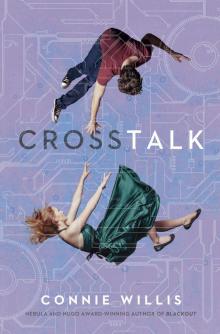 Crosstalk
Crosstalk Lincoln's Dreams
Lincoln's Dreams Miracle and Other Christmas Stories
Miracle and Other Christmas Stories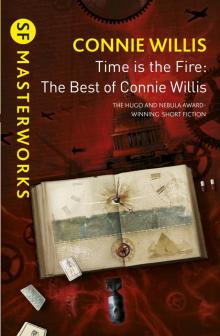 Time is the Fire
Time is the Fire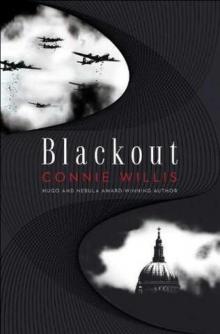 Blackout ac-1
Blackout ac-1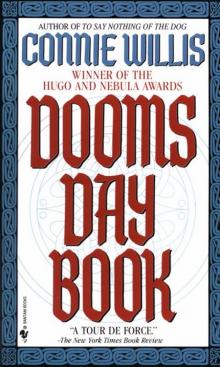 Dooms Day Book
Dooms Day Book Jack
Jack The Doomsday Book
The Doomsday Book Terra Incognita
Terra Incognita The Best of Connie Willis
The Best of Connie Willis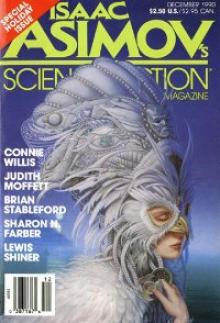 Cibola
Cibola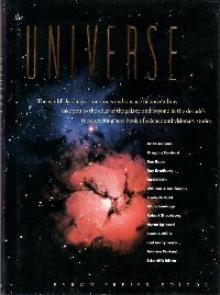 Schwarzschild Radius
Schwarzschild Radius Even the Queen
Even the Queen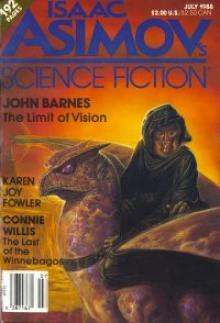 The Last of the Winnebagos
The Last of the Winnebagos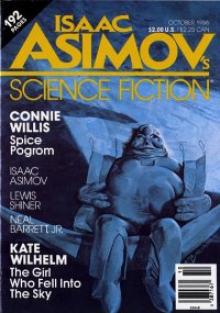 Spice Pogrom
Spice Pogrom Oxford Time Travel 1 - Blackout
Oxford Time Travel 1 - Blackout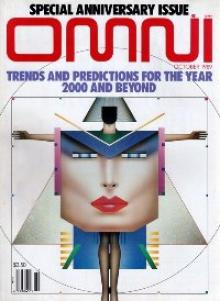 At The Rialto
At The Rialto A Lot Like Christmas
A Lot Like Christmas